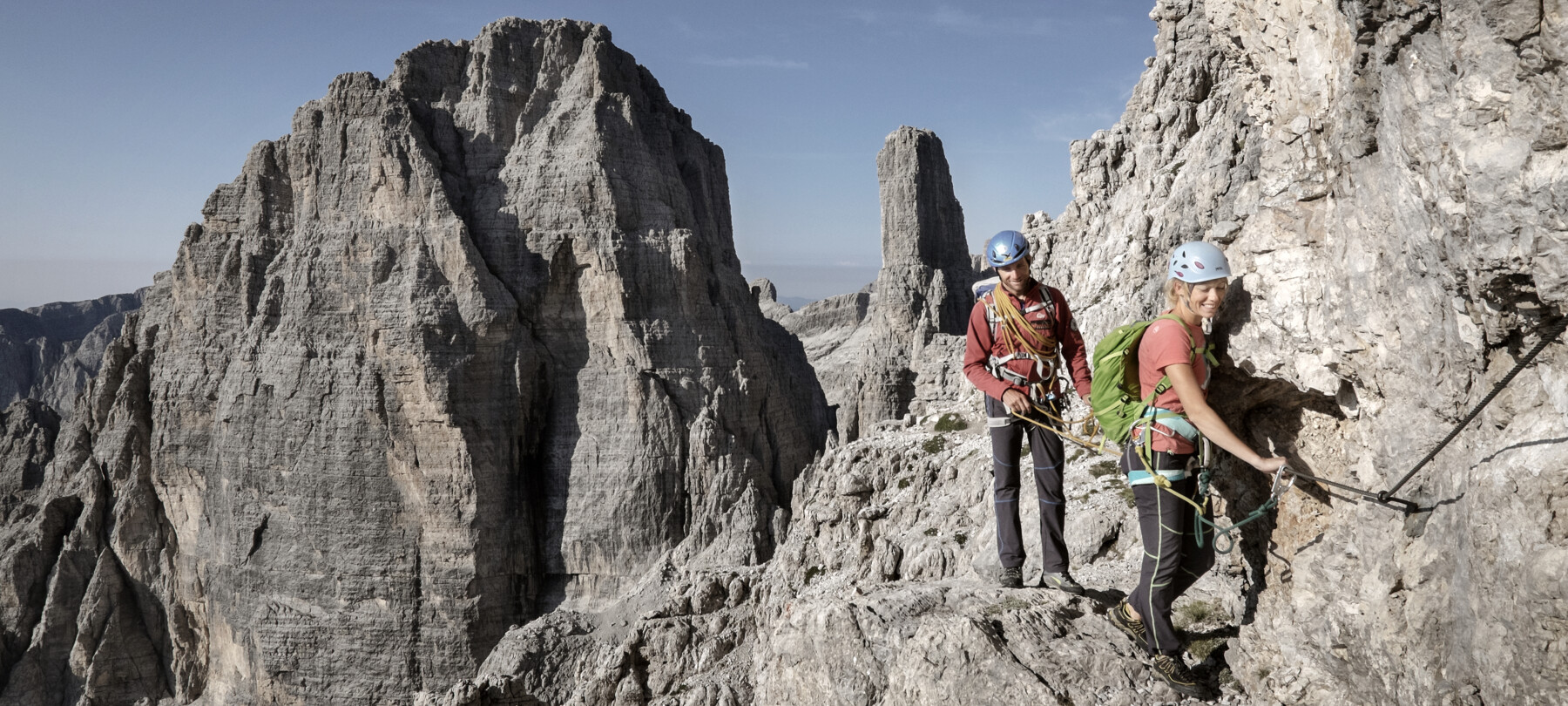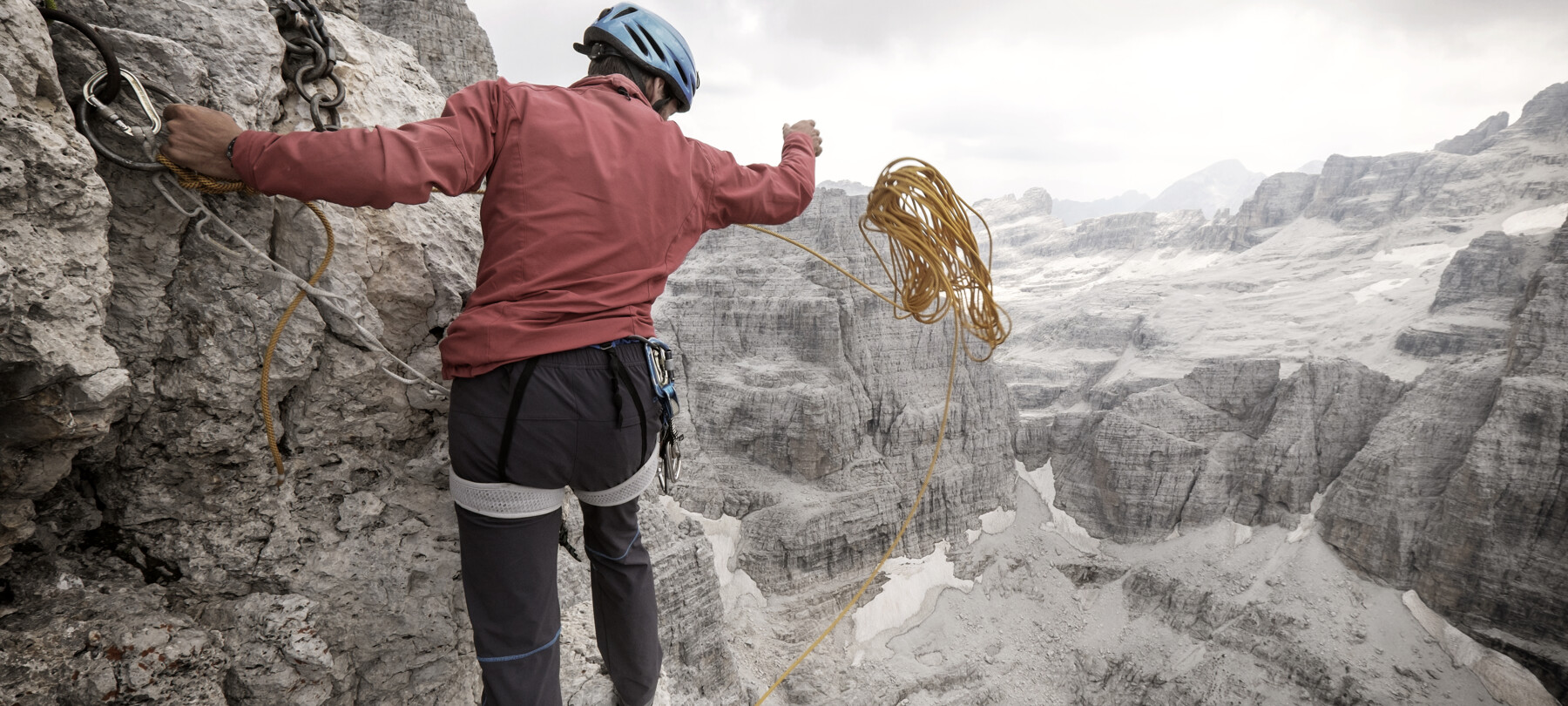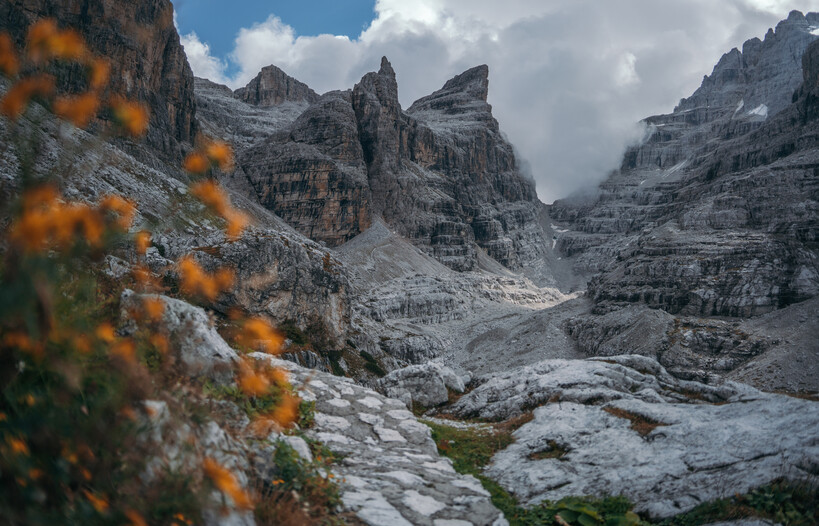A journey into the history of mountaineering
Many famous mountaineers conquered the Brenta Group by scaling its walls
A true mountaineer is not only able to climb, but also knows who first mapped out the climbing routes themselves. Imagine what it would have been like to venture into the Brenta valleys before the time of the mountain lodges. Until the 1800s, only a few ardent hunters dared to scale these heights in pursuit of their prey: we might consider these the first Alpine explorers.
Are you ready to relive the experiences of those men? Taking on the challenge of a normal way is like travelling back in time, allowing you to experience what it meant to climb Cima Brenta, Cima Tosa or Cima d'Ambiez during the second half of the 1800s.
Today, thanks to the invaluable work of the Association of Mountain Guides of Trentino, you can embark on this journey to scale the main peaks of the Brenta Dolomites along the Via delle Normali. This combined climbing and trekking loop route connects 10 peaks of the Brenta Dolomites in 6 stages by linking up pre-existing and refurbished trails (the “vie normali” or normal ways from which it takes its name).

The earliest climbers
The earliest climbers in the Brenta Group for whom documentary evidence exists were the members of a group led by Giuseppe Loss, who scaled Cima Tosa — at the time the highest peak in the group and the second stop on the Via delle Normali — on the 20th June 1865. This stage was also the scene of a series of attempts by Nicolussi and Schulz to reach the Crozzon di Brenta peak in 1884, whose footsteps along the crest you can also retrace.
The third stage will take you to one of the most legendary sites in the Brenta Group: Campanile Alto, towering not far from the famous Campanile Basso, which posed a fiendish challenge for leading mountaineers for many decades. It wasn’t until 1897 that two mountaineers from Innsbruck, Ampferer and Berger, found a way around a sharp drop which was impossible to cross with the footwear of the time.
You will have noticed by now that the normal ways always provide decent handholds, are easy to identify and involve no steep drops: this is because the earliest climbers didn’t have the equipment we enjoy today, like climbing shoes, harnesses, or dynamic rope. In fact, until the 1900s climbers used boots whose soles were not suitable for gripping the rock; rope was made of hemp and offered no elasticity; harnesses did not exist and anchoring relied on wooden wedges and natural rock formations. Rock bolts were invented in the early 1900s.

Tuckett, De Falkner and Dellagiacoma
The fourth peak, Cima Brenta, was climbed for the first time in 1871 by Freshfield and Tuckett, after whom the mountain lodge you will descend towards is named. The most recent measurements, taken after the melting of the ice cap on top of Cima Tosa, reveal that Cima Brenta is now the highest peak in the Group at 3,151 m.
The normal way you use to climb up is not actually the original one, but was established by Dellagiacoma, Ferrari, Nicolussi and Garbari climbing in 1894 from the north.
We move on now to the fifth stage: tackling the normal ways of Cima Falkner and Cima Grostè, which were respectively scaled for the first times by De Falkner and Dellagiacoma in 1882, and by the same two climbers together with Pigozzi and Arlberd ten years later, crossing the peak from SE to NE.
These two are the most northerly peaks of the main Brenta Group. A series of inclined slopes and ledges towards the scree of Vallesinella probably helped hunters to make the ascent as early as the 1800s from the north. With the conclusion of this stage at the Grosté lodge, you’ve crossed the southern part of the Brenta group: but the adventure is not over yet.



